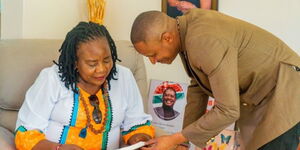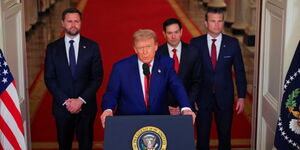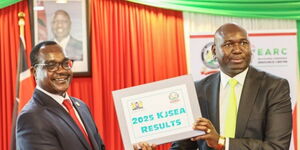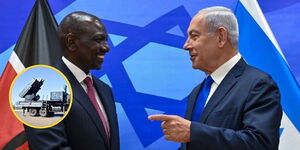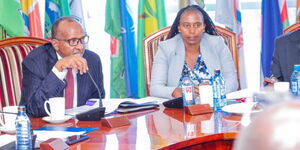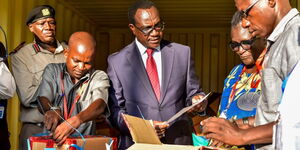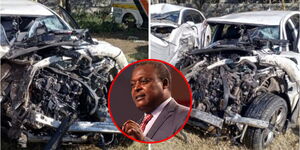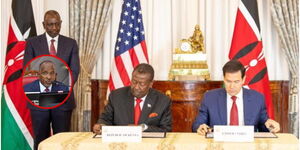The government released President William Ruto's official portrait that will be used during his term.
As is the tradition, portraits of former President Uhuru Kenyatta were replaced with those of Ruto in major government buildings such as the State House.
Consequently, various institutions and business enterprises followed suit in implementing the tradition that dates back to the 60s.
However, the bigger question has been whether it is mandatory for Kenyans to have the official portrait of the president in their offices and businesses.
While there exists no law that stipulates that Kenyans must have the portrait in their building, the government has previously moved to enforce its display across the country.
Notably, rogue county officials and police were accused of harassing traders over the failure to hang the official's portrait of the president.
In 2016, the Ministry of Interior released an advisory cautioning traders against removing Uhuru's portraits in rebellion, following directives issued by the opposition under former Prime Minister Raila Odinga.
Particularly, former Siaya governor Cornel Rasanga asked residents to replace Uhuru's portraits with those of Raila. Consequently, the ministry noted that it would fine those found contravening the directive.
“We wish to take this early opportunity to recognise your highly esteemed position and humbly request you to display the presidential portrait at your workplace.”
“The government will impose a penalty on all citizens who do not comply with the notice,” read the statement in part. Thereafter, the directive caused an uproar on social media which forced State House to clear the air.
At the time Kenyan High Commissioner to the UK, Manoah Esipisu,- who was serving as the State Spokesperson - stated that it was not mandatory for citizens to display the president's portrait
“No one is forcing anyone to do anything. I think portraits have been up in terms of existing tradition…and it is one that we are not fleeing away from,” he stated.
Esipisu's statements were similar to lawyers who opined that the display of portraits is a tradition that has been inherited over the years and is done out of respect, therefore, those apprehended could not be charged in court.
“Even in government offices, it is just a practice in democracies all over the world to display the incumbent president’s portrait. There is no legal requirement of the same.” Makueni Governor Mutula Kilonzo stated.
Nonetheless, the Ministry of Information Communications and Technology, in 2013, noted that it was compulsory for government offices to have the official portrait in their offices.
"There is a requirement for government offices to display the portraits. Those in the private sector can do it at their own pleasure.” former ICT PS Bitange Ndemo stated then.



